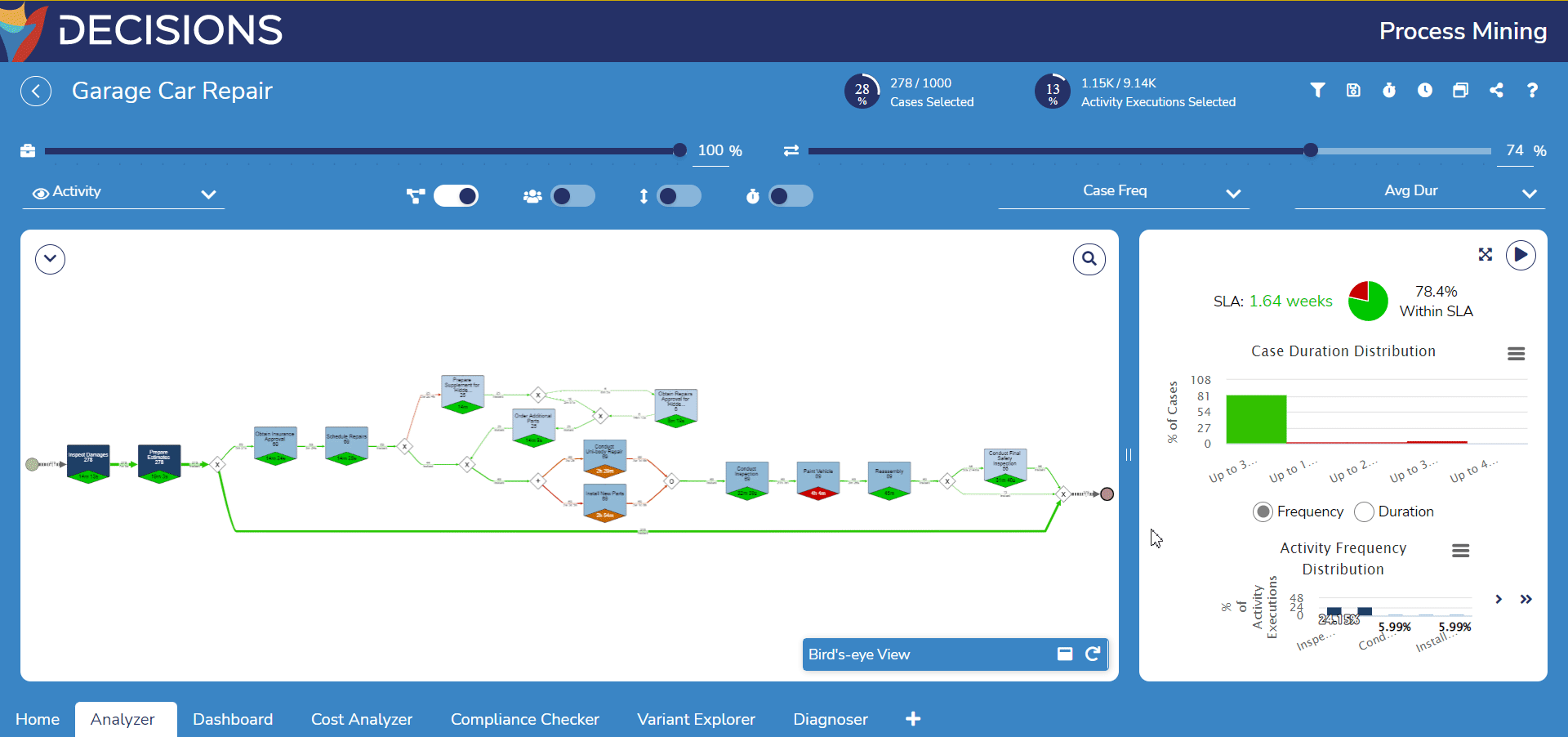Overview
Process mining transforms event log data into an interactive diagram: a process map.
Double-clicking on an event log automatically navigates to the Process Map Analyzer tab, which houses the event log's process map.
The process map comprises a green start node, a red end node, activities, and handovers. All branches in a process are represented.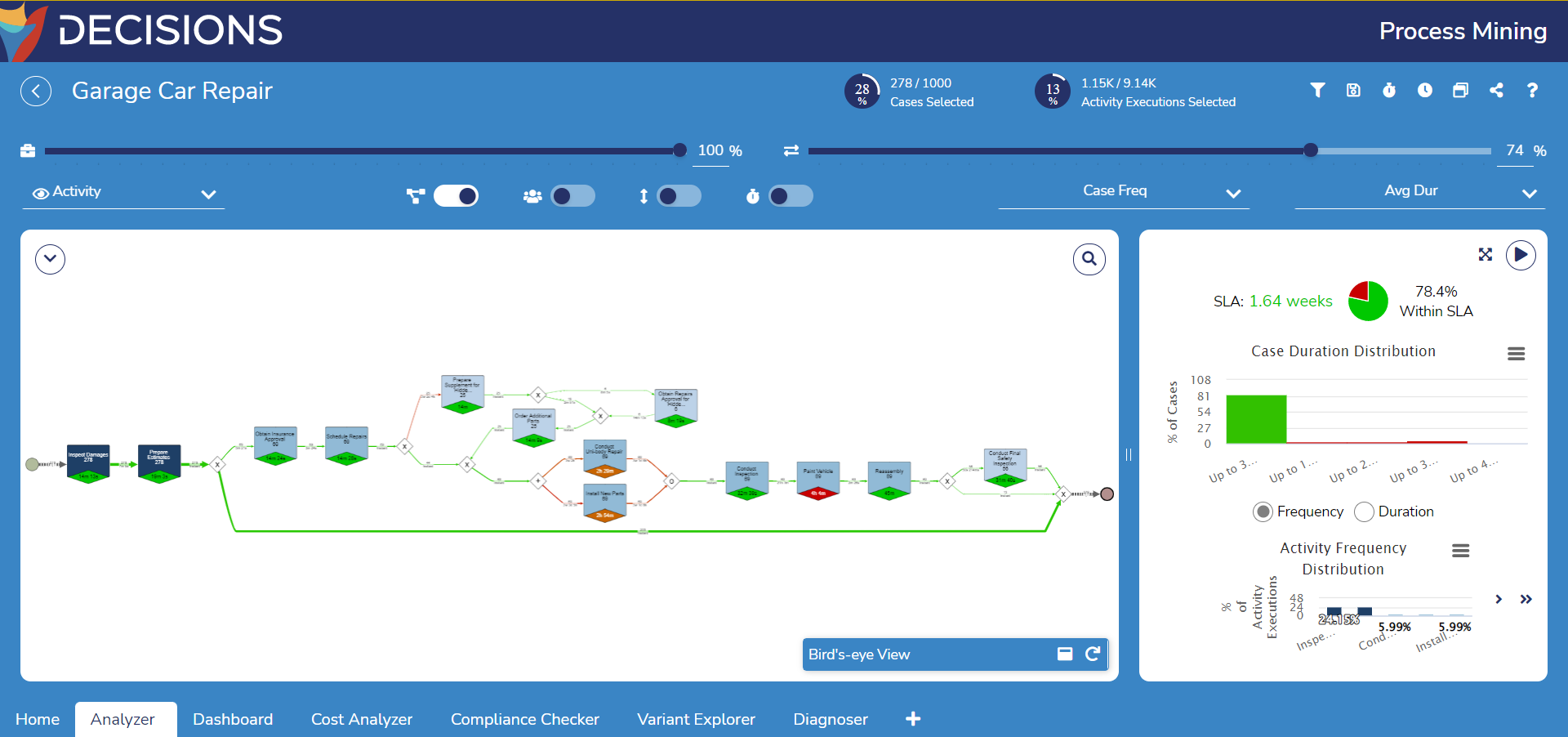
Activities and Handovers
Activities are chronologically organized from left to right. It is represented as a pentagonal shape with a diamond inside.
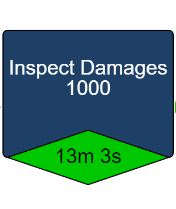
In addition to the activity's name, the shape changes its appearance based on the following information:
| Information Type | Definition | Appearance |
|---|---|---|
| Primary Information | Displays information under the first drop-down menu at the top right of the process map | It affects the color of the main pentagonal shape |
| Secondary Information | Displays information under the second drop-down menu at the top right of the process map | It affects the color of the diamond |
| Frequency | Signals occurrences of an activity within all executions in the process | It affects the color lightness; darker means a higher frequency For durations, green and red represent short and long, respectively |
Handovers are transitions from one activity to another and are represented as arcs between the start and end nodes.
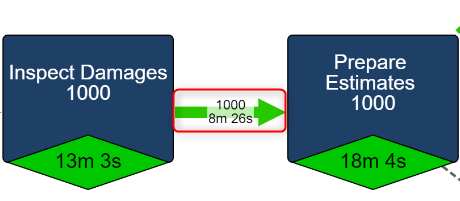
Similar to activities, handovers also display primary and secondary information; however, the thickness of the handover symbolizes frequency instead of assuming frequency is not selected in the primary information dropdown menu.
Altering the Process Map View
Process maps offer a variety of options to customize the process map view to highlight infrequent behavior, discover relations between elements, etc.
Interaction Drop Down Menu
These options alter the Process Map by displaying interactions between different resources, roles, or any other process-involved element.

Sliders
The Activity and Handover sliders above the map adjust how much/little infrequent activities and/or handovers are displayed on the process map.
Reducing the slider removes the number of elements in the graph.

Toggle Buttons
The toggle buttons above the Process Map alter the Process Map. The following table describes their functions ordered from left to right.

| Icon | Function |
|---|---|
| Connected Squares | Toggles between viewing the event log as a process map or a BPMN model |
| Group of People | Toggles visibility of roles involved in the process |
| Up and Down Arrow | Toggles layout between horizontal and vertical |
| Stopwatch | Toggles color of activities and handovers according to their SLA; requires at least one type of primary and/or secondary information regarding duration. |
Primary and Secondary Information Drop-Down Menu
These drop-down menus change which primary and/or secondary information is displayed for the activities and handovers.
Map Drop-Down Menu
Expanding this drop-down menu presents further options to customize the Process Map:
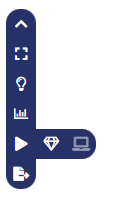
Fit to Window - Resize Map
The Fit to Window (corner-box icon) automatically adjusts the Process Map to fit the dimensions of its containing window,
View Map Statistics - Duration and Frequency View
The View Map Statistcs (bar chart icon) opens the duration and frequency statistics of the process.
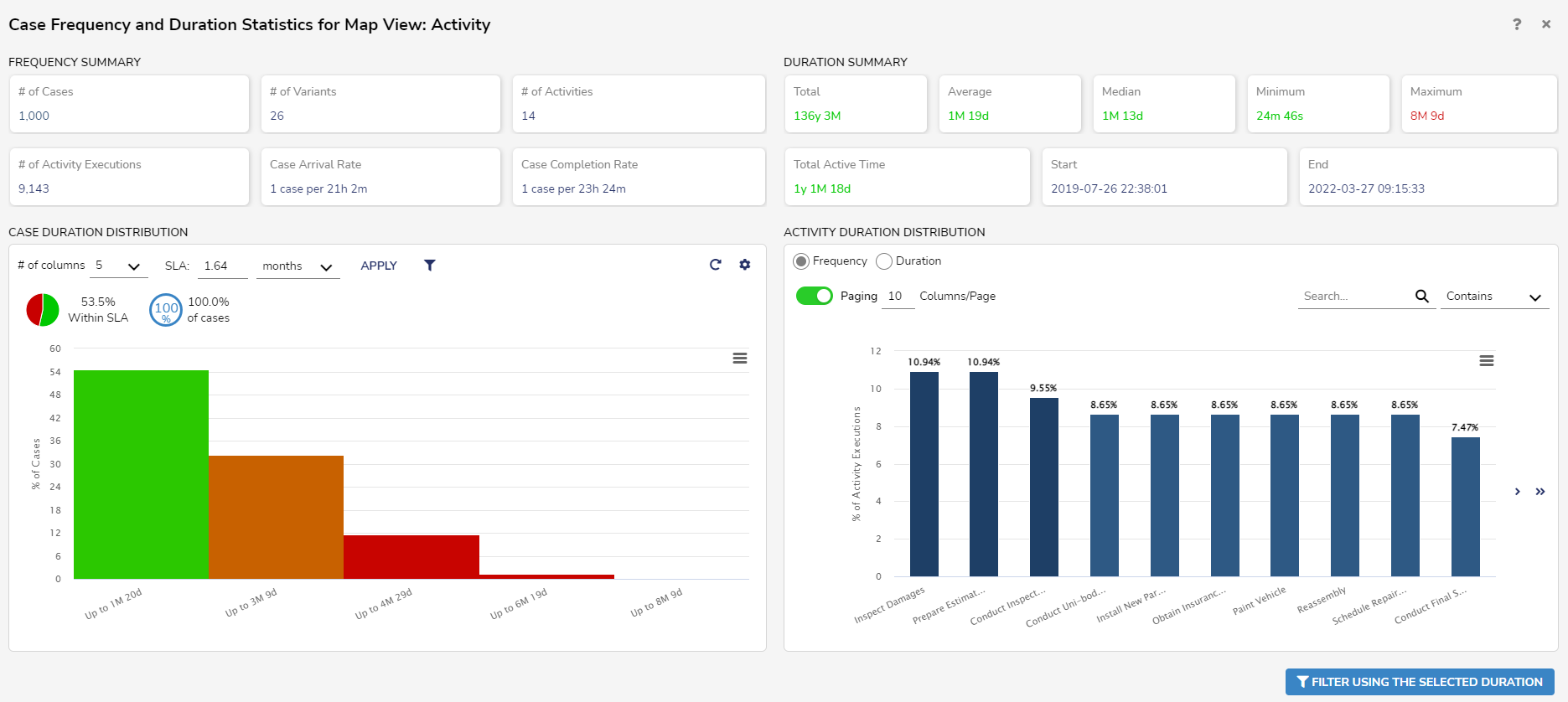
Run (Play Button) > Log Animation
All entries within the event log may be replayed within the map to provide a chronological, dynamic representation of each execution in a process. The animation's bird's-eye-view allows for easier detection of process hotspots and bottlenecks as well as for easier comparison of executions with multiple variants.
Upon selecting the diamond icon, the Log Animation Settings window appears, allowing animations to show one or multiple variants and what color represents them.
The Synchronize Cases checkbox toggles the timelines of the executions so the animation of all cases starts at the same time.
The Synchronize Variants checkbox toggles the timelines of the executions so the animation of all variants starts at the same time.
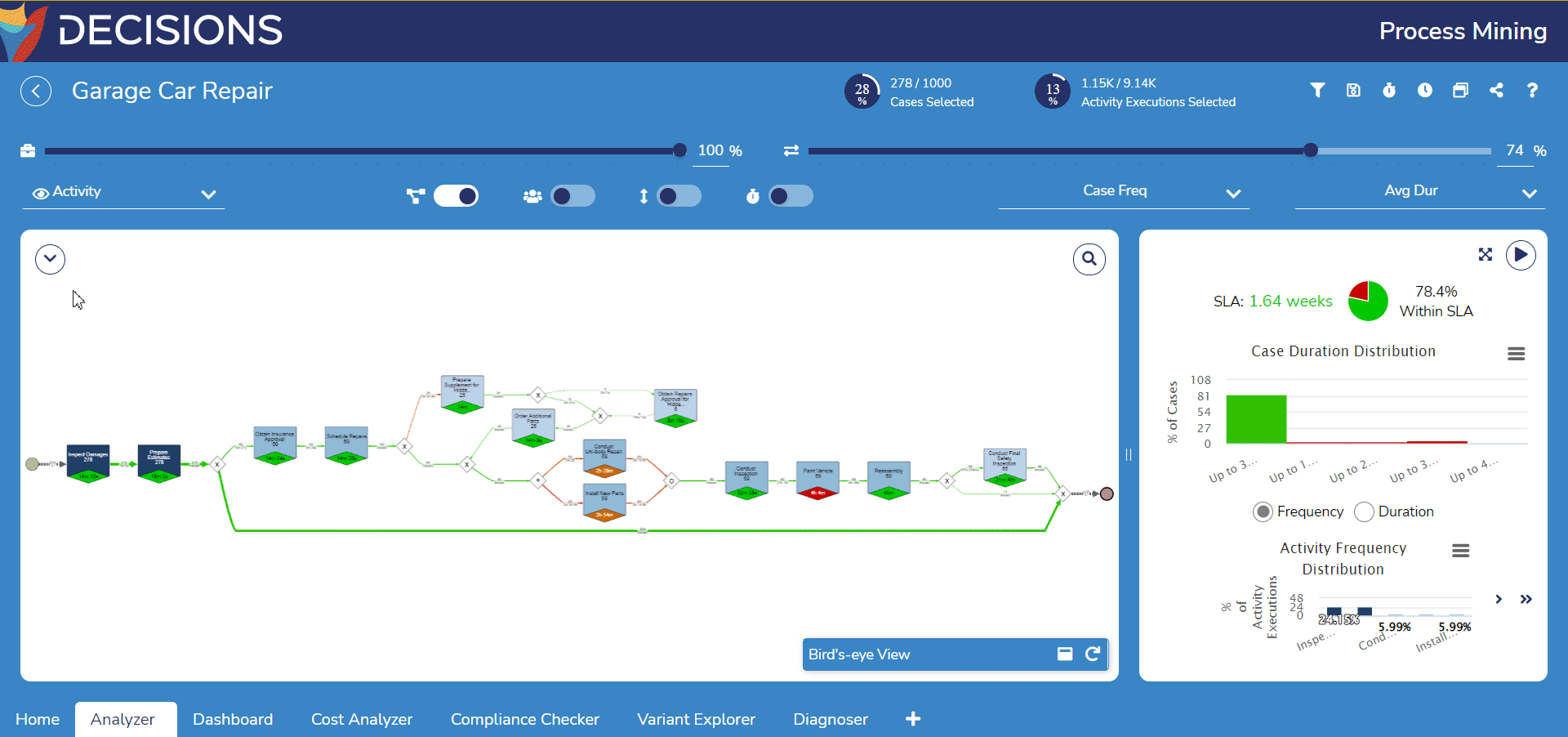
Run (Play Button) > Process Simulation
Process simulation enables the simulation of multiple process improvement scenarios to discover the most optimal outcome(s). Starting the simulation directly from the map automatically extracts the simulation parameter values, such as the duration distribution of activities, from the event log to populate the corresponding fields in the Simulator.
Export Model > Create Case Entity
The Create Case Entity option lets users migrate the legacy systems of Process Mining to Case Entitiy data structure with all the required data attributes and states within the Decisions Platform. Ensure the Process Mining user account in the Decisions have admin rights to create folders.
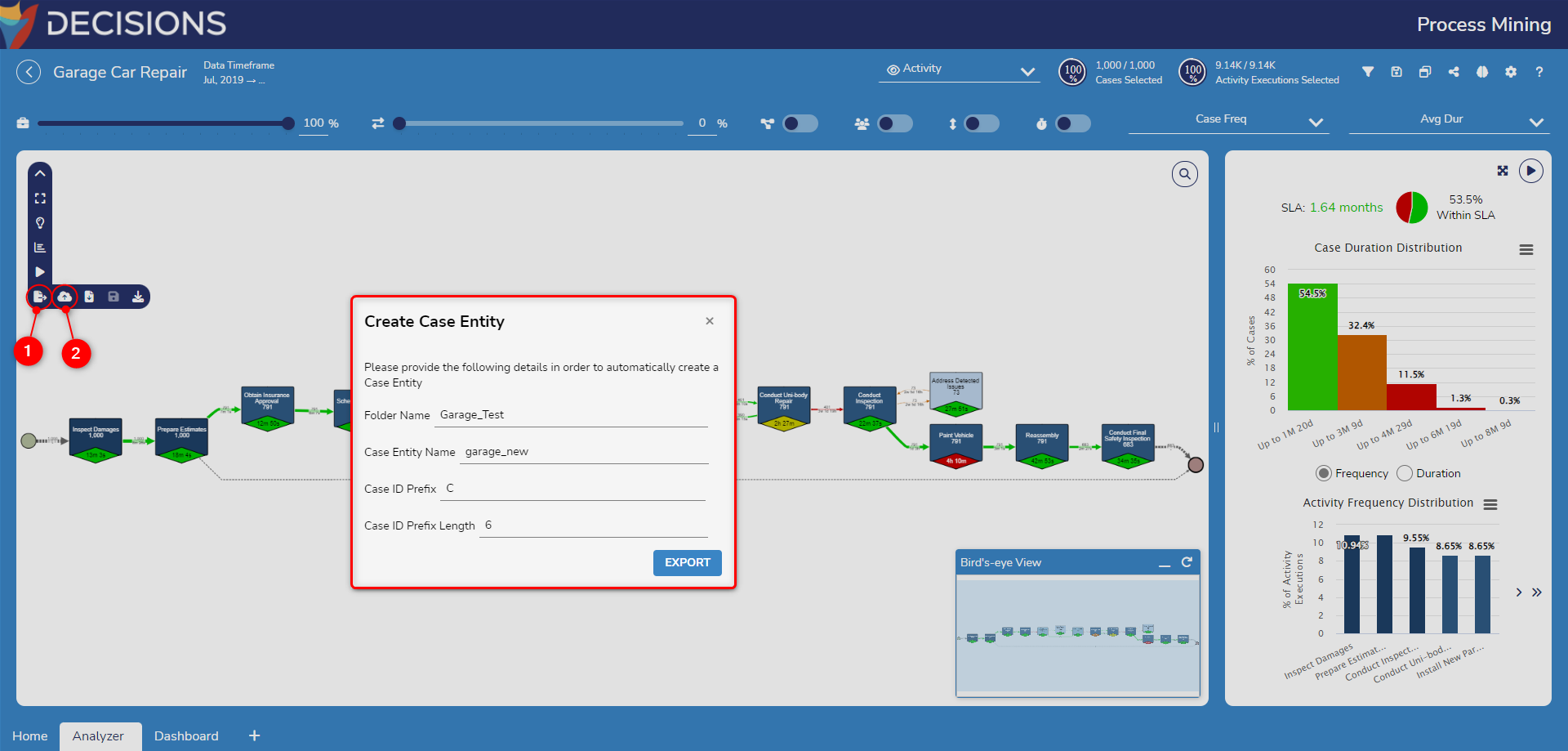
Clicking on the icon will expose a Create Case Entity dialog window. This window lets users enter the Folder Name, Case Entity Name, Case ID Prefix, and case ID Prefix Length. After filling in all the necessary details, click on Export to export the model in Decisions. This will create a Folder in Decisions with the Case Data Structure.
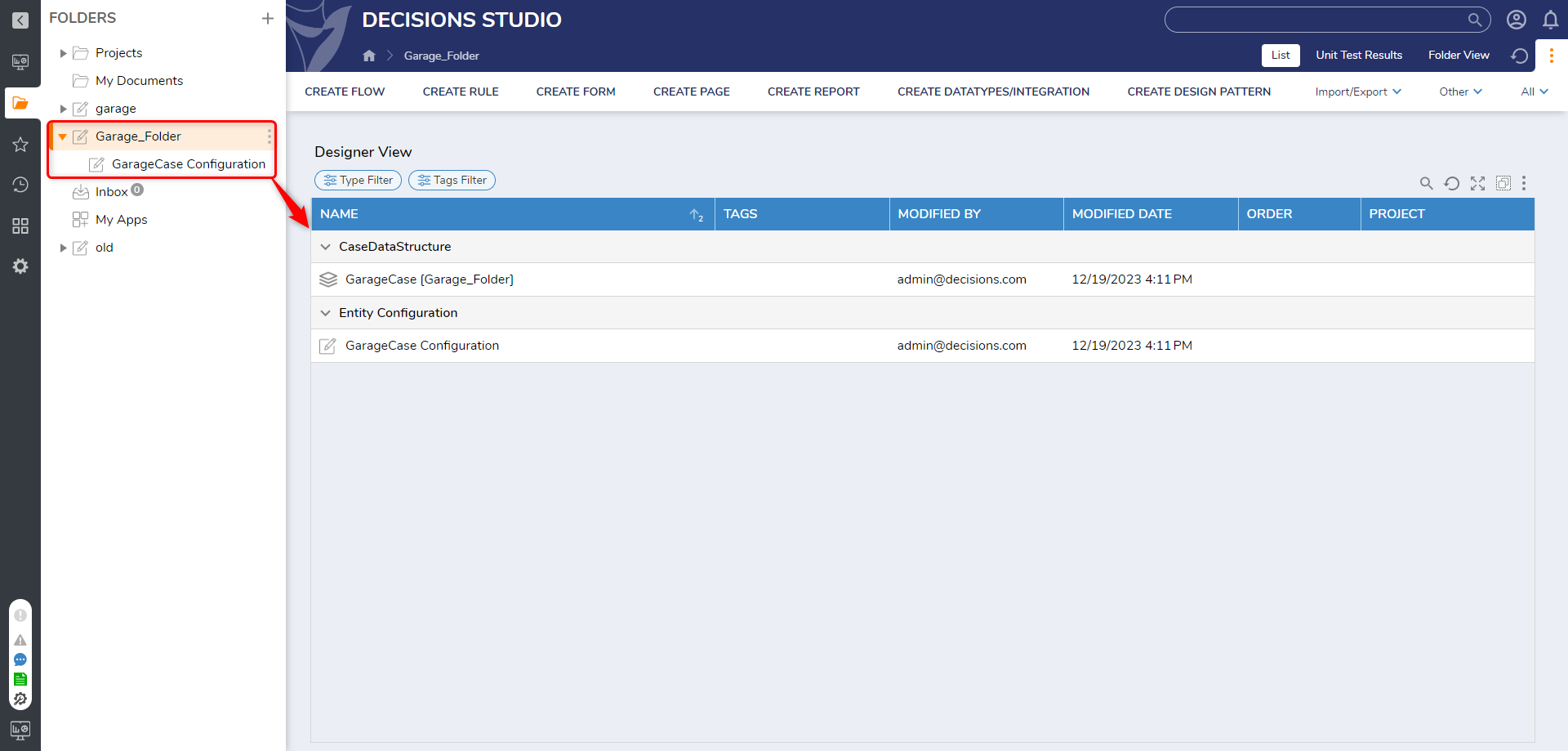
Export Model > Download Process Mining Analysis Report
Downloads the Report in a .docx format.
Export Model > Save
Saves the changes to the Process Map.
Export Model > Download as Image
Downloads the Process Map as either a PNG or a JPEG image file. The file's resolution and dimensions can be manually configured.
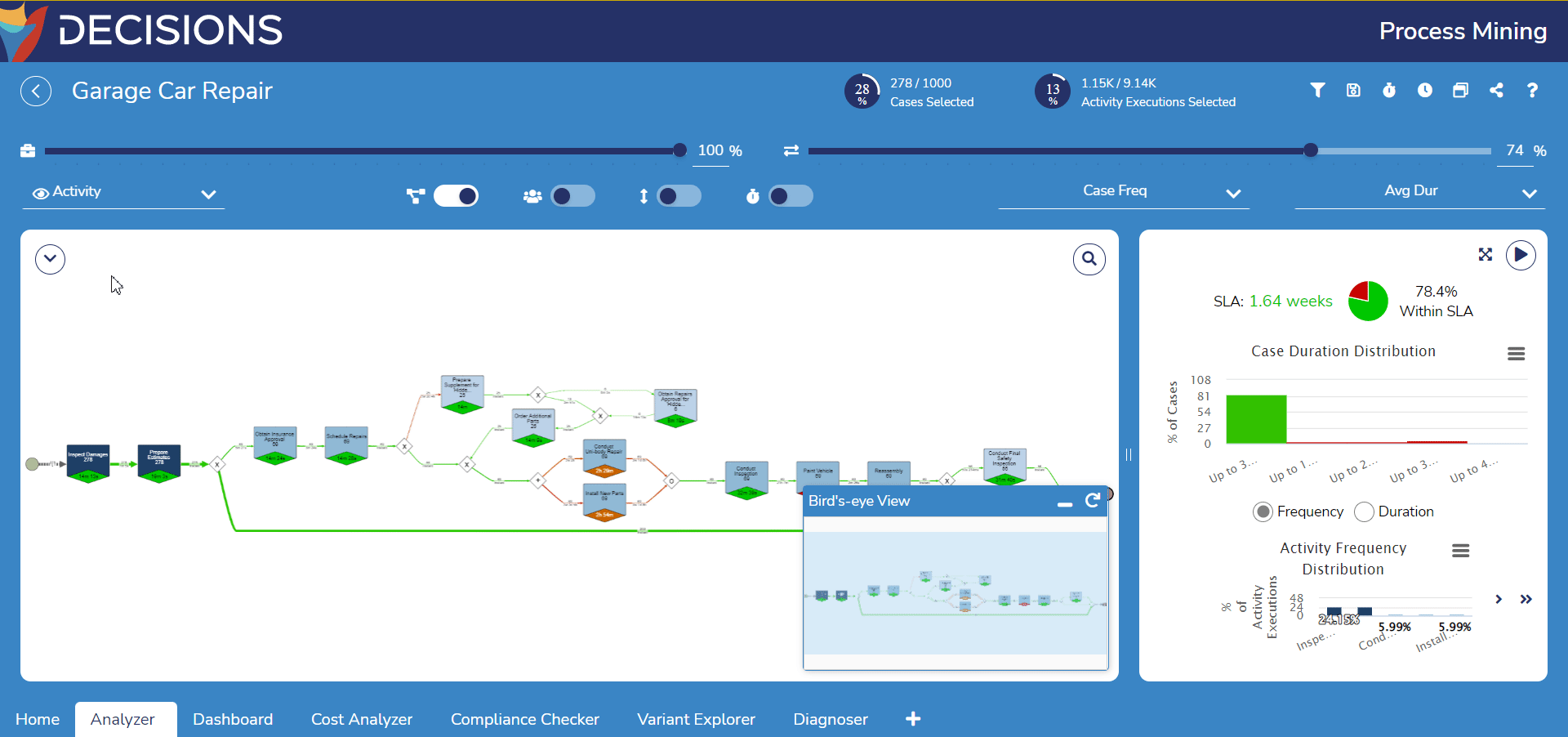
Side Panel
The right panel displays distributions of execution, activity, or handover durations. Double-clicking on an activity or handover will open its duration distribution while double-clicking on either the start or end node displays the executions instead.
By default, the event log's side panel shows a top chart displaying execution duration and a bottom chart displaying the frequency/duration distribution of activities. Users may return to this view by double-clicking the start node.
Double-clicking on an activity displays the duration distribution of an activity at the top chart, while the bottom chart displays the frequency distribution of resources performing that activity.
Double-clicking on a handover displays the duration distribution of a handover, while the bottom chart displays the frequency distribution of a resource performing its target activity if available. Otherwise, it will be blank.
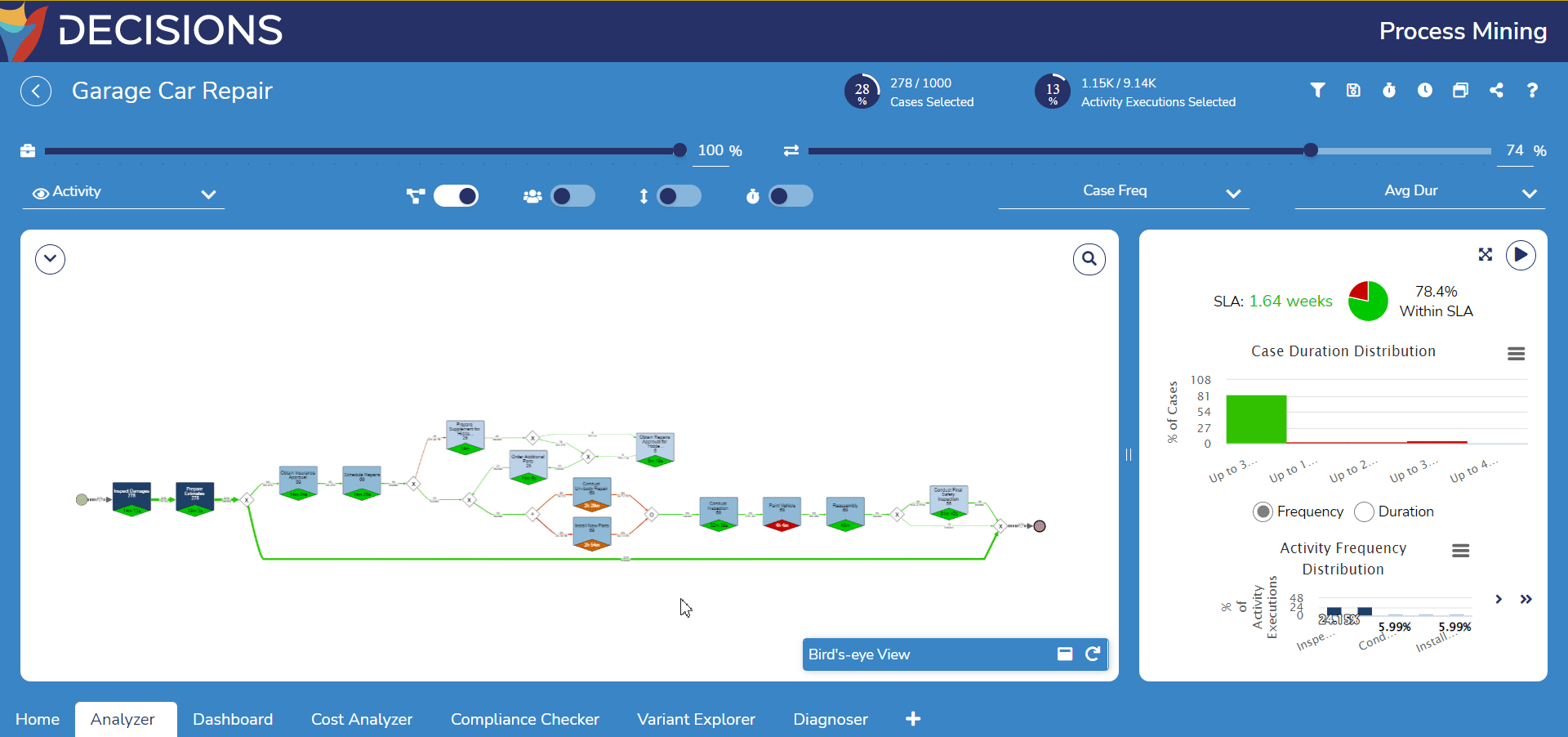
The default SLA is set to the average case/activity/handover duration, depending on what the duration distribution chart is displaying.
Users may change the SLA by expanding the distribution charts panel by clicking on the expand arrow icon. In the new window, SLA may be configured under the Case Duration Section.
